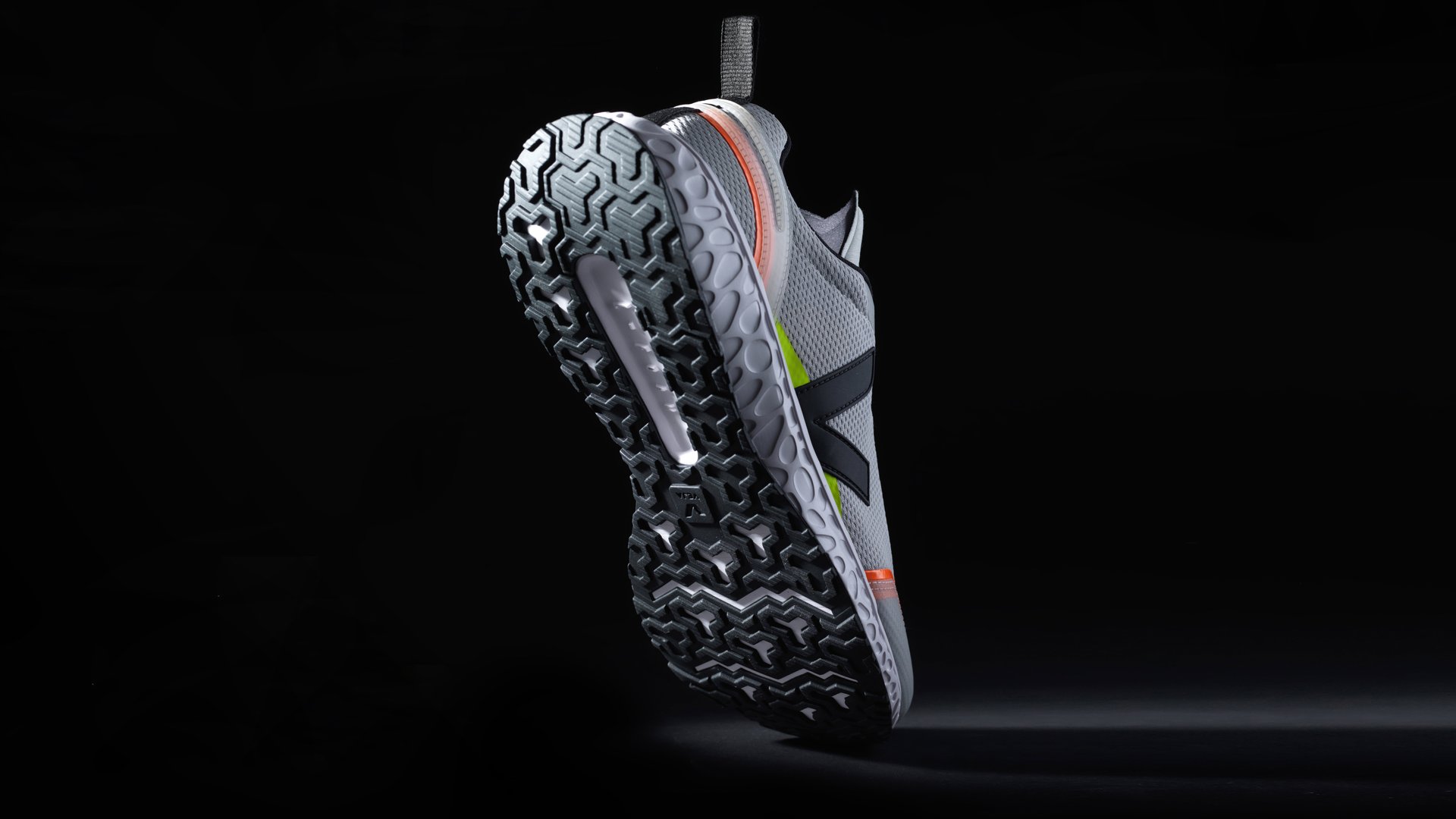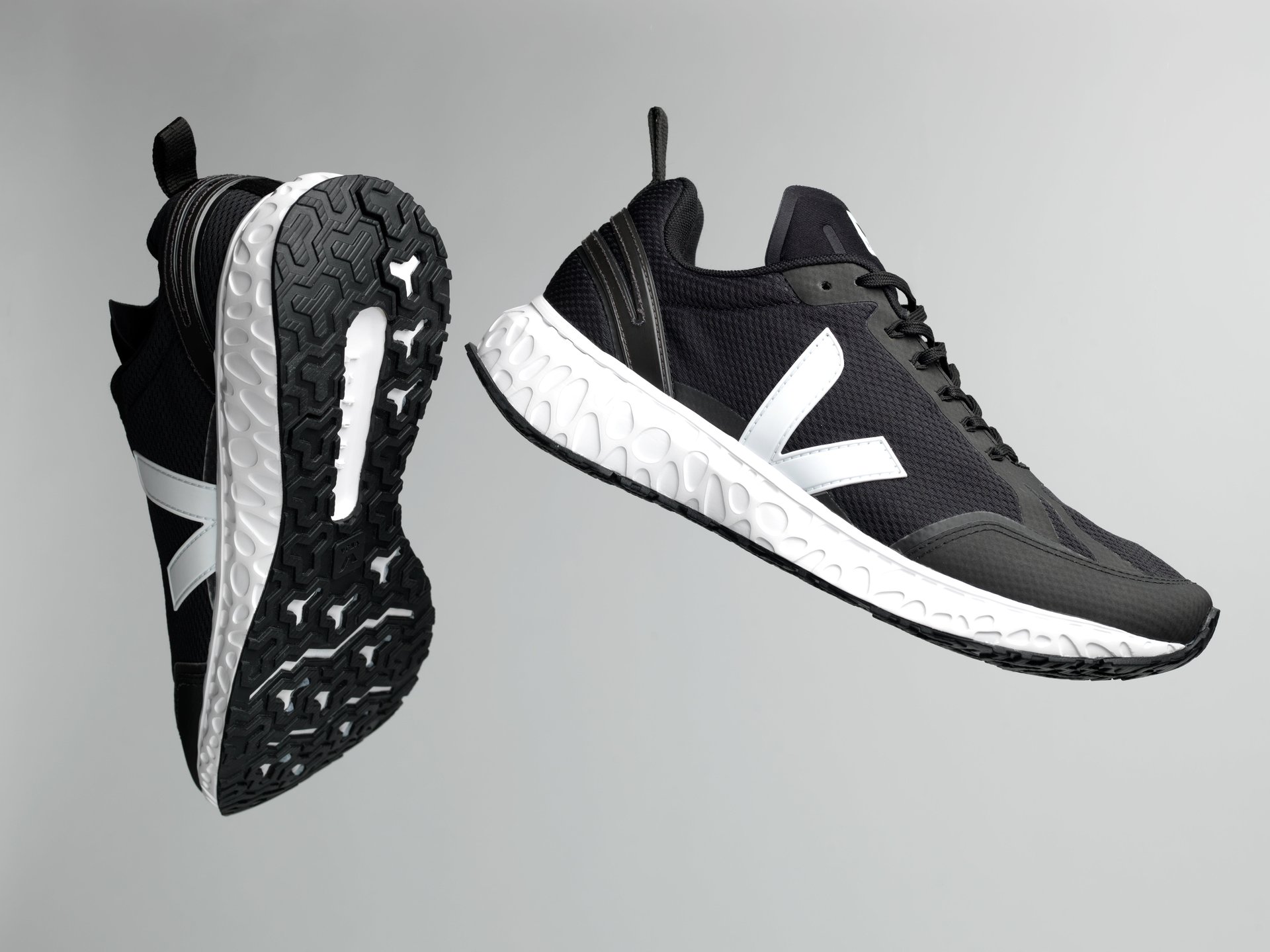Why is it so hard to make a running shoe without plastic?
Walk into the running section of any sneaker shop and you will find an astounding assortment of petroleum-derived plastics in various forms, such as polyester, thermoplastic polyurethane (TPU), and ethylene-vinyl acetate (EVA).


Walk into the running section of any sneaker shop and you will find an astounding assortment of petroleum-derived plastics in various forms, such as polyester, thermoplastic polyurethane (TPU), and ethylene-vinyl acetate (EVA).
“When you are in the footwear industry, you see all the running shoes with plastic, as if performance is linked to plastic and petroleum,” says Sébastien Kopp, who cofounded the sneaker label Veja in 2005. “Without it there is no performance. That was the first reaction of the geeks we met in this particular industry.”
The material’s advantages have made it indispensable to shoe manufacturers. Draw it into fibers and it can be a flexible yet durable upper. Fill it with tiny air pockets and you have a bouncy, resilient foam cushioning. Mold it into solid pieces and you get hard elements that provide stability and structure. Despite the environmental issues caused by its production, plastic is endlessly adaptable, and crucially, inexpensive compared to other materials.
That’s why it took Veja four years to develop the Condor, which the company is calling the first post-petroleum running shoe. That description might lead you to believe it dispenses with petroleum derivatives entirely. But even Veja, which made its name on eco-friendly versions of classic sneaker styles, couldn’t eliminate plastic completely. Still, it managed to make the Condor with 53% bio-based and recycled materials. According to Veja, as much as 99% of the material used in a pair of typical running shoes can be a form of plastic.

Developing the Condor presented major challenges. One of the toughest parts to engineer, the midsole, is what provides most of the cushioning and energy return in a running shoe. Veja turned to an outside firm, Brazil’s Braskem, which produces the sugarcane resin that sneaker brand Allbirds uses for its soles. The resulting midsole is 22% sugarcane, 15% rice husk, and 8% banana oil, while the rest is traditional EVA. “We’re very happy because we succeeded in putting 45% non-petroleum materials inside,” Kopp says.
The company tried to find existing materials to substitute for plastic wherever it could. The support insert in the heel is Pebax Rnew, a partially bio-based elastomer made from castor oil. Other footwear brands use a related ingredient mixed with a polymer, according to Kopp, but not Rnew because it’s too expensive.
Veja also used recycled materials like plastic water bottles to create the knit for the upper. Many components were a mix of materials. The outsole—the tough layer that comes in contact with the ground—is a combination of wild rubber, rice husk, and synthetic rubber. The insole is 56% regular EVA, 8% recycled EVA, and equal parts wild rubber, recycled plastic bottles, and jute.
The Condor stands in stark contrast to a running shoe Adidas is developing, made entirely from a single plastic. In theory, that will allow it to be easily broken down and recycled into a new sneaker in an endless loop. Adidas is still testing the product and hasn’t released it to the public.
Both are efforts to make more sustainable products that don’t sacrifice performance. Veja tested versions of its shoe, designed for short and medium runs (rather than marathons), across 80 runners to keep improving it. After sending samples to dedicated running retailers, as many as 20 agreed to carry the shoe. (More than twice as many general footwear retailers will also stock it.)
The company is also using the materials it developed to make its existing sneakers even more comfortable. “It’s the beginning of a new world for us,” Kopp says.